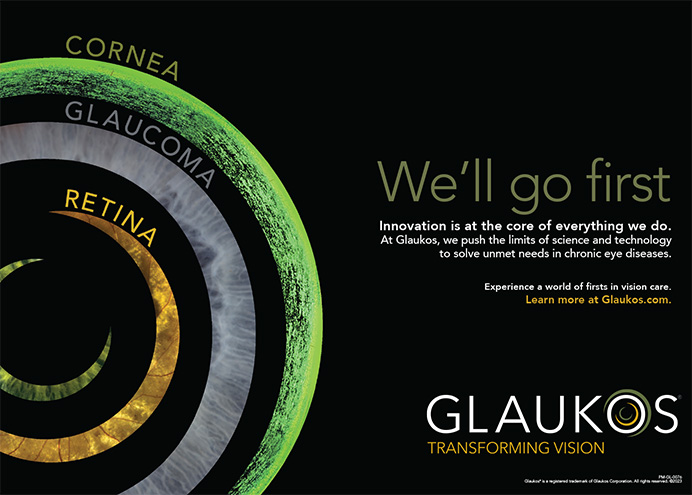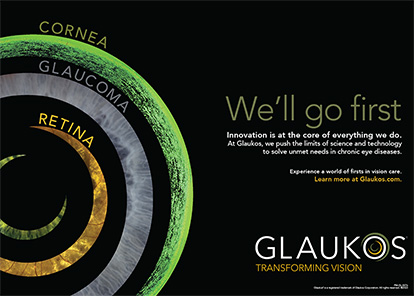Surgeons' frustration with marketing is understandable. They spend more than $100 million annually on paid advertising to draw new patients into their refractive surgery centers, yet the market's growth is stagnant. Despite these efforts, the volume of refractive procedures has remained stable at 1.3 to 1.4 million eyes per year.
As I was examining this problem, I wondered how different the situation might be if surgeons treated marketing more like a clinical trial. Could a well-designed and tightly controlled protocol that enrolled patients according to valid inclusion criteria and the utilized systems that ensured accountability minimize the number of patients lost to follow-up? This article touches on some of the weaknesses of traditional marketing methods and offers alternatives that could help refractive surgeons design more effective advertising strategies.
PARDON THIS INTERRUPTION
Many of the advertisements I encounter for refractive surgery suffer from poor design and emphasize the wrong message. Instead of focusing on the surgeon's expertise, they should highlight how much patients can benefit from refractive surgery. I have also noticed that most marketing materials lack a singular point of differentiation (ie, a reason to believe) and an effective call to action. Furthermore, advertisements that appear on television, radio, and in print have a limited shelf life. If a marketing message in these media does not elicit an immediate response, it is soon lost and forgotten among the several thousand advertisements a typical consumer encounters each day.
Advertising in broadcast media such as television, radio, and print attempts to break through to a target audience at the right time and location—catching consumers when and where they are most likely to be watching, listening, or reading. This strategy does not always work, however, especially when consumers are pressed for time and attention.
A LESS VISIBLE CONSUMER
Television has changed a lot since the production of the first commercials, something refractive surgeons should keep in mind when they prepare their marketing materials. Whereas three major networks once dominated the medium, the advent of cable and satellite television has fragmented the audience into increasingly smaller segments that attract a narrow band of viewers. Consumers are harder to reach, particularly for a product like LASIK, which appeals to and crosses many demographic boundaries. The problem is compounded by the availability of digital video recorders (DVR) such as TiVo (Alviso, CA), which transform the once intrusive advertising medium of the television commercial into optional viewing.
Surveys of DVR users are showing ominous signs for television advertisers, as more than half of users are practicing "ad avoidance" by skipping the advertisements.1 A similar problem plagues radio advertising, where subscription satellite services such as Sirius (New York, NY) and XM (New York, NY) and the increasing popularity of the iPod (Apple Computer, Inc., Cupertino, CA) and other MP3 players reduces the predictability of consumers' exposure to commercials. Even newspapers are less popular: readership continues to decline in favor of on-demand news reports available 24 hours a day via the Internet (Figure 1).
TREATING MARKETING LIKE A STUDY
Physicians naturally understand the value of careful clinical trials for refining medical devices and drugs. Tracking, documentation, and predetermined parameters play an important role in the process, because they provide clinical endpoints against which investigators can assess a product's safety and efficacy. Clinical trials also provide a statistical foundation for a device's or drug's expected performance.
Refractive surgery's marketing strategies can now follow a similar protocol. Modern Solution, a company in Carlsbad, California, has developed an innovative approach to acquiring patients that helps refractive surgery centers successfully communicate the benefits of LASIK to qualified candidates. The company's strategy also magnifies the effectiveness of the marketing message by targeting consumers in specific stages of life and emphasizing patient-to-patient referrals.
Modern Solution's program combines a sophisticated printing technology with a process-driven tracking system. This approach is designed to provide fully visible and accountable results of a practice's marketing efforts, a component that is lacking in most marketing plans.
EXPANDING BY NARROWING
The term life-stage marketing refers to targeting consumers who are more likely to respond to a message because their behavior matches that of individuals who are also interested in the same service or product. Modern Solution's approach to life-stage marketing has two steps. First, the company obtains data about consumers' purchases, which has been analyzed and segmented into 70 "profiles" or clusters. These clusters are based on more than the traditional demographic segments of age, income, and zip code; they also incorporate 32 different variables of demographic, psychographic, and consumer behavior. These clusters and associated groups are highly granular views that fully represent buying patterns among all consumers.
By comparing thousands of previously treated LASIK patients to these cluster groups, Modern Solution has determined which life-stage profiles represent the vast majority of people having LASIK. It turns out that the consumers in seven of these groups exhibit a much higher propensity for having LASIK. This highly refined approach to segmentation allows refractive surgeons to narrow the search for likely LASIK candidates in their community by directly targeting and reaching these "more likely" consumers—who are most similar to patients they have already seen in their practices.
Second, Modern Solution prepares direct mail for distribution to the seven groups identified as likely LASIK candidates. Every piece of mail is customized to speak to consumers by appealing to their unique life stage (Figure 2).
Because this approach targets the seven key cluster groups who are likely to have LASIK, it is expected to generate a better rate of response than traditional methods that depend on broadcast advertising. As a result, more effort is spent aiming at the appropriate target, and less effort is wasted with marketing dollars that reach consumers we know are much less interested based on their life stage and consumer behavior.
EQUIPPING THE ENTHUSIAST
Given that most refractive surgery centers' depend on word-of-mouth referrals to find new LASIK patients, it is surprising that most practices do not take a clinical study-like approach to engaging newly treated patients. Many practices thank their patients with a small gift and a handful of business cards, but they lack the time or the technology to establish long-term communication designed to stimulate further referrals. Modern Solution's program addresses this shortcoming by providing practices with professional kits that contain well-designed brochures. Surgeons distribute these kits to patients and encourage them to pass the materials on to friends and family members who express interest in refractive surgery.
Because each kit has a unique serial number (as does each piece of targeted direct mail described earlier), individual practices can track and monitor the referral process. This scientific approach has been missing from the refractive equation and will help practices truly harness the enthusiasm of LASIK patients.
MEASURING RESULTS
Modern Solution provides refractive surgeons with the answer to the question, "How well does my advertising really work?" By tracking results over time, surgeons can clearly and objectively calculate the return on the marketing dollars they spend instead of relying on quasi-subjective answers to the question, "How did you learn about our practice?"
SUMMARY
Modern Solution's program attempts to quantify the process by which refractive practices acquire patients by applying strategies similar to a clinical trial's to both ends of consumers' decision-making process (awareness and recommendation).
The ability to measure and monitor what happens at the beginning and end of the consumers' decision-making process is critical for designing effective marketing and to restoring growth in the refractive surgery category. Although preliminary, the data so far from the first group of customers are encouraging, with results showing a definitive return on investment. I will be reviewing and analyzing these data over the coming months—serving as marketing monitor (much like the medical monitor of a clinical study). I anticipate publishing results later this year.
Shareef Mahdavi draws on more than 20 years of medical device marketing experience to help companies and providers create demand for new procedures and technologies. He is a consultant to Modern Solution. Mr. Mahdavi may be reached at (925) 425-9900; shareef@sm2strategic.com.


